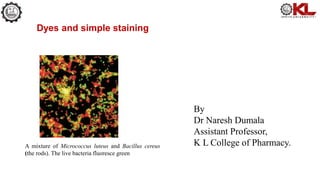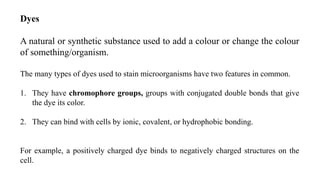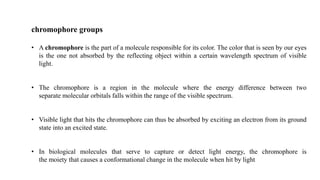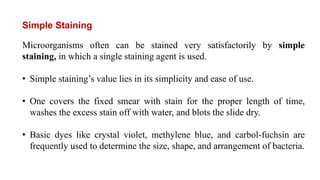This document discusses dyes and simple staining of microorganisms. It defines dyes as natural or synthetic substances used to add or change color. Dyes stain microorganisms via chromophore groups that impart color and bind to cells through ionic, covalent, or hydrophobic interactions. There are two main classes of ionizable dyes - basic dyes with positive charges that bind to negatively charged cells, and acid dyes with negative charges that bind to positively charged cells. Simple staining uses a single dye, like crystal violet, methylene blue, or carbol-fuchsin, and is a simple and effective way to determine bacterial size, shape and arrangement.












